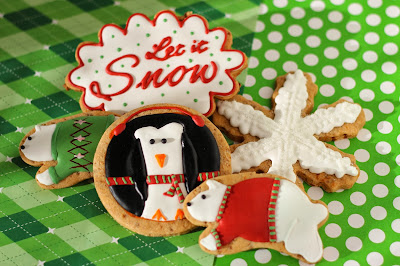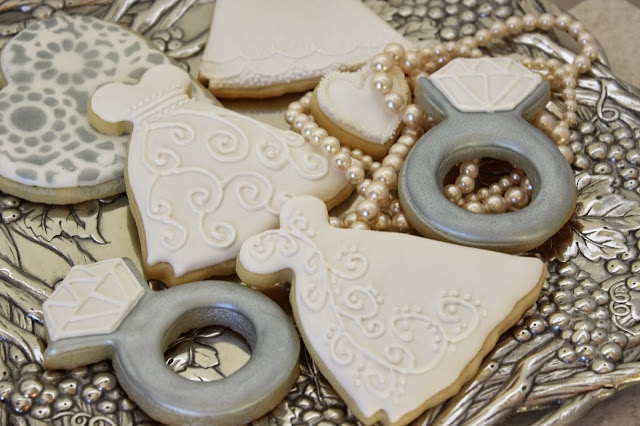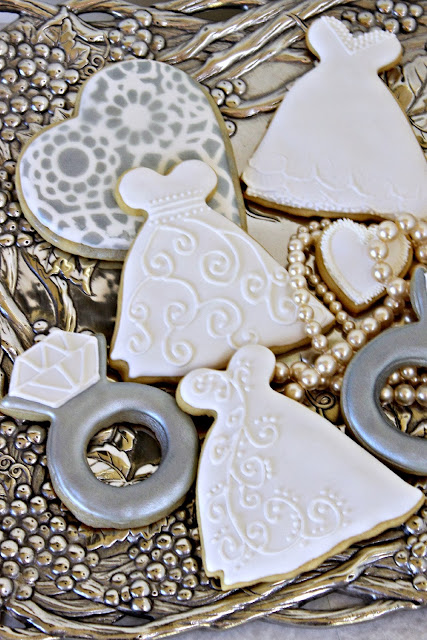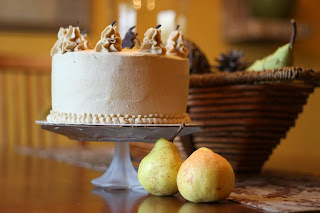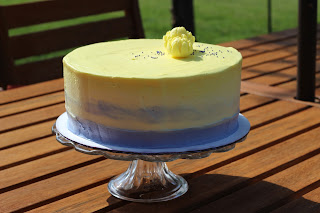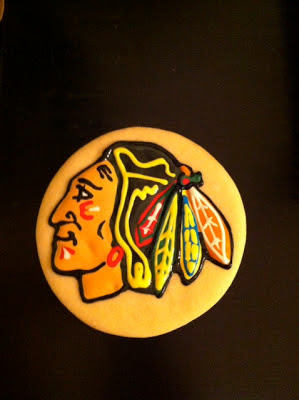I'm sure a lot of these tips might be no-brainers, but a few have really made a difference for me.
Measuring and Ingredients
- Weighing ingredients is the most accurate way of baking. It produces the most reliable results and you'll have a cleaner kitchen with less dirty dishes. Sweetopia offers a printable chart that shows the weights of common baking ingredients.
- If your recipe calls for 1 cup sifted flour this means you sift the flour before measuring. However, if the recipe calls for 1 cup flour, sifted this means you sift the flour after measuring.
- The temperature of ingredients will affect your baking. Let all refrigerated items come to room temperature before using them (unless a recipe says otherwise) to produce more reliable results. To quickly warm eggs, place them in a bowl of room temperature or slightly warmer water and check them every few minutes. Occasionally I soften a stick of butter in the microwave if I'm in a time crunch. I find that the "soften" setting of my microwave slightly melts the butter so instead I microwave at 5 second intervals and flip the sticks over each time. My microwave softens perfectly in 15 seconds.
- Melted butter that has been refrigerated back to a solid state is not the same! You can create clarified butter by melting, but it is not used in most cakes and cookies. It does not cream as well. Creaming is necessary to create the air bubbles needed to assist in rising.
- Eggs separate better when cold but egg whites whip better when warm/room temperature. Whisk whole eggs in a separate bowl before adding to the batter.
- When a cake recipe calls for butter, it means unsalted butter. However I can not get in the habit of using unsalted butter. If using salted butter, it is recommended to omit the salt that your recipe calls for.
- The quality of your butter matters. This is one ingredient that I will not buy at the cheapest price. There are varying moisture and salt contents for different brands of butter.
- The quality of your baking powder matters.
- There is debate whether unbleached or bleached wheat flour is better for cake baking. I don't have a solid opinion on this.
- In short, the answer to the question of when to use baking powder vs baking soda is this: Baking powder had an acid, but baking soda needs an acid. An acid as in lemon, yogurt, buttermilk, sour cream, or unsweetened natural cocoa powder. The acid helps to neutralize the metallic flavor of sodium carbonate which is produced by baking soda. Or just follow your recipe....I had to figure this one out in the middle of baking.
- A buttermilk substitution works just as well as buttermilk. Add one tablespoon of vinegar to your measuring cup and then fill to your 1 cup mark with milk.
- Try baking your cake (larger than 9") at 325 degrees. But don't even think about doing this with cupcakes.
- The best pan coating to be wiped along the sides and bottom of the pan consists of an equal shortening, vegetable oil, and flour mix. You also might want to make sure to use a silicone brush to wipe this on the pan. The natural bristles don't have a great mouth feel in your cake.
- Bake-even strips (or even soaked strips of towel), should be used around cakes larger than 10" to help them bake even. A flower nail or heating core in the center of the cake will help the center rise even as well.
- Cutting parchment paper rounds to use at the bottom of your pan makes for a much easier cake removal. Cutting them with tabs on the sides that hang over the edge is even smarter. A leftover butter wrapper will also work in a pinch.
- Butter should be creamed longer that you think. Five minutes or so....
- The best stage for flavoring to be added is into your creamed butter. This helps to distribute your flavorings evenly throughout the batter.
- I have no idea what speed 10 is used for on the Kitchen aid mixer. I think I've used up to 8 for whipping egg whites, but for some reason I'm scared to use 10.
- Start and end with dry ingredients when alternatively adding them to your mixer.
- Its really easy to achieve even layers when multiples of the exact same pan from the same manufacture are used to bake your cake. You can weigh the pan with your batter inside and compare.
- Let a cake cool 20 minutes and then remove to cool on a wire rack.
- A good warning that your cake is almost done is the scent. I can always smell the cake baking near the end of it's baking time.
- Testing your oven will give you a good insight on how to handle your cakes and cookies. It is best to rotate them so they will bake evenly. Cakes should only be rotated after 20 minutes so that the structure of the cake will not be disturbed. I wait much longer for larger cakes. If you'd like to see the cool spots in your oven, do a toast test with white bread. You can see the obvious cool spots in my oven below. An oven thermometer is also a great tool for anyone to have. You can check your oven to see how accurate it is, and if it is off, you can consult the manual for your oven and calibrate it.
Frosting Cakes
- Freezing the cake even for a day will make the cake much easier to handle, especially for layering cakes. Wrap them in plastic wrap and tin foil to freeze.
- While the layers are still frozen, use a long serrated knife to even out the sides of your cake starting from the top with cuts straight down the side of the cake. (But only if you plan to do a crumb coat and a final coat of frosting.) See picture above.
- The long serrated knife will also level the top of your cake if you can slice across evenly. If you can't, insert toothpicks halfway into the side of the cake near the top, all the way around, to use as a guide. Level cake layers will help to ensure that they won't slide off and that the cake won't crack.
- Start frosting the previously frozen and trimmed cake right away to help decrease crumbs in your icing. The first light coat is called your crumb coat. It will help seal the crumbs. Pop the cake in the refrigerator for 15 minutes. When you remove it, the icing will be set enough to start the second layer.
- Use a small bowl to wipe your spatula into when crumbs occur so that they don't make their way back into your main bowl of frosting.
- The one trick to learn is how to apply frosting so that your spatula never touches the cake but only spreads the icing, by using a figure 8 motion. Always lift off the spatula towards your already frosted cake, not near the edge of your just applied frosting.
- Or..... use Wilton's pastry bag tip 789 especially made for frosting. Icing your cake in wide strips with this tip creates an application that only needs to be evened out with your spatula.
- An inexpensive turntable, offset spatula, and straight side spatula or bench scraper are the tools you need to create a perfectly frosted cake. Offset spatula is used to apply frosting to the top of the cake and straight spatula/bench scraper to smooth the sides.
- Run the spatula under very hot water, wipe it dry on a towel, and then smooth your frosting. This is only necessary at the very end of your frosting battle, if you are a perfectionist.
I feel like I could keep adding to this list but I'll stop for now and maybe make a second list in another year. Or I could make just one more list about baking and decoration cookies......


